Preserved Mixtec Codices: Codex Zouche-Nuttall – Beautiful ‘Folding Screen Of Historical Events Of Mixtec People Of Oaxaca
A. Sutherland - AncientPages.com - The Mixtec people of Oaxaca referred to books as the ‘tutu’, which also meant – ‘paper’ and in the 16th century, they called their codices ‘tonindeye’, (‘the history of families’), or ‘naandeye’ or (‘memories of the past’).
Two folding pages of Codex Zouche-Nuttall, Mixtec, Postclassic. Image source
Their codices were made from strips of paper, bark, cloth, or deerskin, about 13 feet long and about 6 inches high and folded like a harmonica, in the so-called accordion-style pleats, so that when opened, the reader saw two pages at a time.
The two outer pages were glued to pieces of wood that served as covers. Depending on the used material the pages were made, they had their specific names: ‘holy paper’, ‘holy skin’, or others.
It is possible that the adjective for sanctity was added due to the fact that the books largely related to mythology.
Only a few of the pre-Columbian Mixtec books have been preserved to this day and all four are devoted to historical events. These codices are the Codex Zouche-Nuttall, the Codex Selden, the Codex Colombino-Becker, the Codex Waecker-Gotter, the Codex Bodley, and the Codex Vindobonensis (or Vienna, as it is sometimes called).
Eight Deer Jaguar Claw (right) in meeting with Four Jaguar, depicted in the Codex Zouche-Nuttall. Image source
Some of these codices were taken to Europe and their names refer to their present locations (the Dresden Codex or Paris Codex) but these are not their original names.
One of the best-known Mixtec codices with beautiful Mixtec pictograms is the Zouche-Nuttal Codex from Teozacualco that contains 47 cards, approximately 23.5 cm wide and 19 cm tall and now, stored in the British Museum. Its one side is about the history of the Tilantongo, Teozaocalco, important alliances and conquests of several 11th and 12th century Mixtec rulers; the other side is a biography of Mixtec ruler, the 8th deer, Jaguar's Claw.
Pre-Hispanic scribes at work preparing different colors. Image credit: mexicolore.co.uk
In his book ‘Empires of Time: Calendars, Clocks, and Cultures’, Anthony F. Aveni gives is a vision of the Codex Zouche-Nuttal, a beautiful ‘folding screen’ text describing historical events of the Mixtec people.
“… The scene depicts a group of aristocratic individuals who probably represent the ancestors of local rulers… Like the heroes of the Popol Vuh, each figure, labeled by his or her calendar name, proceeds from one event to the next in a sinuous journey across the pages of time…”
Codices – How Were They Made?
If made of skin, the pieces of previously cleaned and hairless deerskin (or fork skin) about 50 to 100 cm long, were glued in such a way to obtain a belt with the desired dimensions.
The surfaces of the documents were usually hardened with diverse chemicals before the pages were covered with paintings. Among usually used colors was the red dye from powdered cactus juices (Dactylopius coccus, the gray color was obtained from the mixture of charcoal black dye with calcium carbonate and another popular color, the dark-yellow paint possibly originated from plants such as the butterfly bush (Buddleia) or others. Other colors were obtained by blending colors and their combinations.
Layout Of Contents In The Mixtec Codices
Contents in the Mixtec manuscripts are arranged horizontally, along the entire length of the document, while the text is clearly marked by red lines. Additionally, the scribes added separate registers on individual pages. Reading continues in the place where the line is not tightened to the edge of the card. The information of weddings, wars, alliances, births, conflicts, and kinships, are all, arranged in chronological order and the scribes used the day dates of the 260-day year provided with the name of the 365-day year within 52-year cycles.
Cotton Was Used To Record Historical Documents
The so-called ‘lienzos’ – (cotton cloth) covered with historical events were usually stretched on the floor or hung on the walls.
The Mixtec ceremonial vessels (some found during excavations of the graves of Monte Alban) were also decorated with ornaments that displayed important events.
The Aztecs and other people of central Mexico also produced codices, after the Spanish arrived. These looked more like modern books than the older ones, folded like a harmonica.
This literature, however, including archaeological findings shed light on life of Mexico and the entire Mesoamerica.
Written by – A. Sutherland AncientPages.com Staff Writer
Copyright © AncientPages.com All rights reserved. This material may not be published, broadcast, rewritten or redistributed in whole or part without the express written permission of AncientPages.com
Expand for referencesMore From Ancient Pages
-
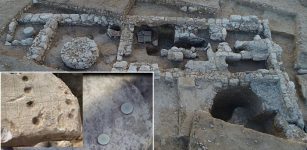 1,200-Year-Old Soap ‘Factory’ Unearthed In Beduin City Of Rahat In Israel
Archaeology | Aug 18, 2020
1,200-Year-Old Soap ‘Factory’ Unearthed In Beduin City Of Rahat In Israel
Archaeology | Aug 18, 2020 -
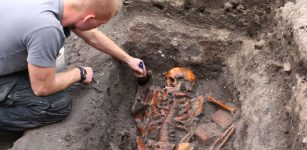 Evolution Of Plague Over Hundreds Of Years In Scandinavia Documented By Scientists
Archaeology | Feb 28, 2023
Evolution Of Plague Over Hundreds Of Years In Scandinavia Documented By Scientists
Archaeology | Feb 28, 2023 -
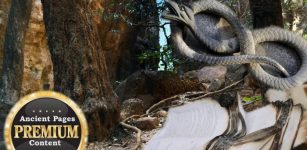 Forbidden Ancient Manuscripts Almost Erased From History – Unusual Myths, Beliefs And Practices – Part 2
Artifacts | May 11, 2018
Forbidden Ancient Manuscripts Almost Erased From History – Unusual Myths, Beliefs And Practices – Part 2
Artifacts | May 11, 2018 -
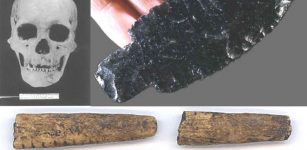 Buhl Woman Of Idaho: One Of The Oldest Skeletons In North America
Civilizations | Jun 3, 2023
Buhl Woman Of Idaho: One Of The Oldest Skeletons In North America
Civilizations | Jun 3, 2023 -
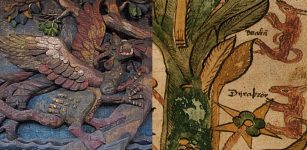 Magical And Malicious Creatures That Prey Upon Yggdrasil In Norse Beliefs
Featured Stories | Dec 6, 2019
Magical And Malicious Creatures That Prey Upon Yggdrasil In Norse Beliefs
Featured Stories | Dec 6, 2019 -
 Modern Humans Did Not Enter Europe By Sea – New Study Says
Archaeology | Mar 7, 2022
Modern Humans Did Not Enter Europe By Sea – New Study Says
Archaeology | Mar 7, 2022 -
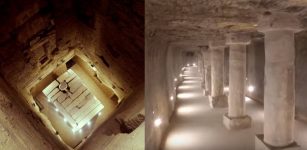 Magnificent Interior Of The Djoser Pyramid Revealed In Stunning Images And Video
News | Mar 14, 2020
Magnificent Interior Of The Djoser Pyramid Revealed In Stunning Images And Video
News | Mar 14, 2020 -
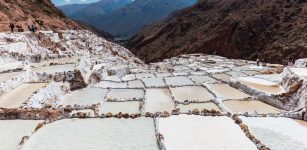 Astonishing Pre-Inca Salt Ponds of Maras In Peru Were Created By The Chanapata Culture
Civilizations | Sep 14, 2016
Astonishing Pre-Inca Salt Ponds of Maras In Peru Were Created By The Chanapata Culture
Civilizations | Sep 14, 2016 -
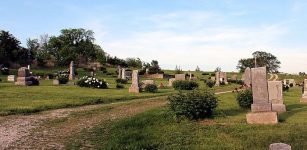 Mystery Of The Stull Cemetery: A Gateway To Hell?
Featured Stories | Aug 25, 2018
Mystery Of The Stull Cemetery: A Gateway To Hell?
Featured Stories | Aug 25, 2018 -
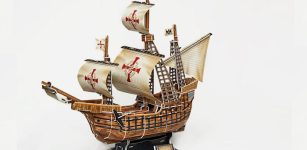 Italian Sailors Knew Of America 150 Years Before Christopher Columbus – Ancient Documents Reveal
Archaeology | Oct 8, 2021
Italian Sailors Knew Of America 150 Years Before Christopher Columbus – Ancient Documents Reveal
Archaeology | Oct 8, 2021 -
 Ahimsa – Ancient Non-Violence Concept Teaching Compassion And Love Towards All Living Beings
Featured Stories | Jan 2, 2019
Ahimsa – Ancient Non-Violence Concept Teaching Compassion And Love Towards All Living Beings
Featured Stories | Jan 2, 2019 -
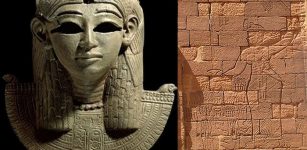 Amanirenas – Fearless Queen Of Kush Who Defeated Ancient Romans
Featured Stories | Jan 30, 2019
Amanirenas – Fearless Queen Of Kush Who Defeated Ancient Romans
Featured Stories | Jan 30, 2019 -
 Viking Age Horse Bridle Found Under The Ice 2,000 Meters Above Sea Level
Archaeology | Sep 28, 2023
Viking Age Horse Bridle Found Under The Ice 2,000 Meters Above Sea Level
Archaeology | Sep 28, 2023 -
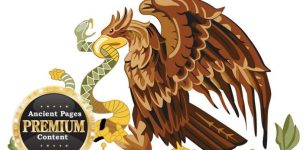 Deception And Hidden Truth – Ancient Struggle Of The Eagle And Serpent – Part 2
Ancient Symbols | Sep 6, 2019
Deception And Hidden Truth – Ancient Struggle Of The Eagle And Serpent – Part 2
Ancient Symbols | Sep 6, 2019 -
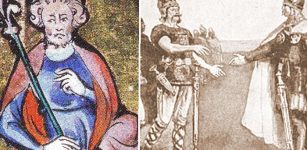 Battle Of Assandun: The Great Battle In English History And A Brief Period Of Viking Dominion In England
Featured Stories | Apr 11, 2016
Battle Of Assandun: The Great Battle In English History And A Brief Period Of Viking Dominion In England
Featured Stories | Apr 11, 2016 -
 Mysterious Steles Of Mongolia – ‘Deer Stones’ In The Tsatsyn Ereg Necropolis
Archaeology | Jan 23, 2019
Mysterious Steles Of Mongolia – ‘Deer Stones’ In The Tsatsyn Ereg Necropolis
Archaeology | Jan 23, 2019 -
 Unexplained Cases Of Holographic Projections In Ancient And Modern Times
Featured Stories | Sep 14, 2018
Unexplained Cases Of Holographic Projections In Ancient And Modern Times
Featured Stories | Sep 14, 2018 -
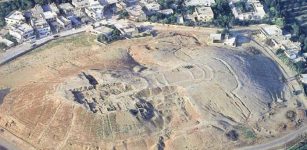 Iron Age Site Tell Deir ‘Alla (“Mound Of The High Monastery”) Flourished 400 Years In Central Jordan Valley
Archaeology | Jul 25, 2022
Iron Age Site Tell Deir ‘Alla (“Mound Of The High Monastery”) Flourished 400 Years In Central Jordan Valley
Archaeology | Jul 25, 2022 -
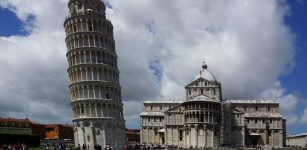 Why Has The Leaning Tower Of Pisa Survived Strong Earthquakes Since The Middle Ages?
Archaeology | May 10, 2018
Why Has The Leaning Tower Of Pisa Survived Strong Earthquakes Since The Middle Ages?
Archaeology | May 10, 2018 -
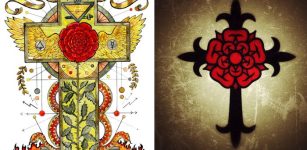 Rose Cross – Powerful Symbol That Existed Long Before Christianity
Ancient Symbols | Dec 3, 2017
Rose Cross – Powerful Symbol That Existed Long Before Christianity
Ancient Symbols | Dec 3, 2017



